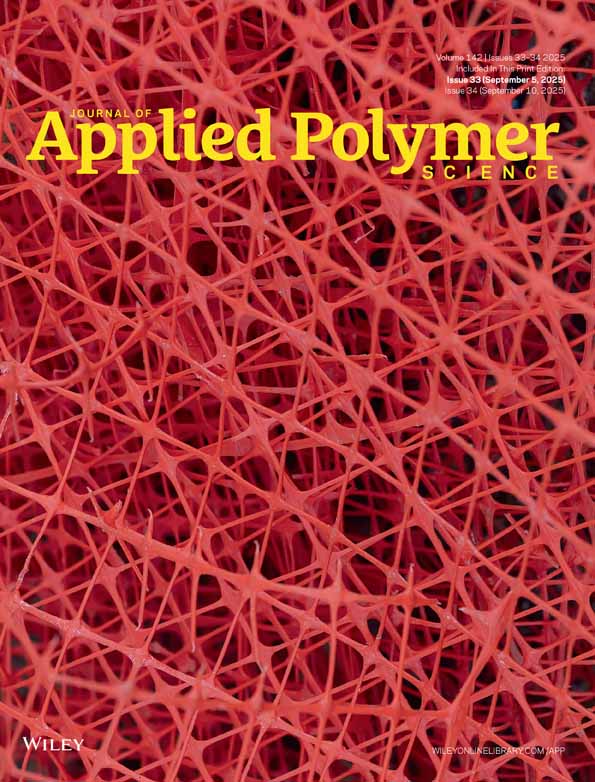Synergy effect of hybrid fillers on the positive temperature coefficient behavior of polypropylene/ultra-high molecular weight polyethylene composites
Abstract
Hybrid nanocomposites of polypropylene/ultra-high molecular weight polyethylene (PP/UHMWPE, 70/30) with various amounts of carbon black (CB) and carboxylated multiwalled carbon nanotubes (c-MWNTs) were prepared by the solution mixing and melt blending techniques. The effects of the mixture of CB and c-MWNTs on the positive-temperature-coefficient (PTC) behavior and the negative-temperature-coefficient (NTC) behavior, as well as the room temperature resistivity, were studied. The transmission electron microscopy (TEM) images showed that the CB particles were aggregated at the interface, between PP and UHMWPE. This selective localization of the CB particles at the interface along with the formation of continuous conducting media leads to the formation of additional conducting networks, resulting in a percolation threshold at a low CB content. A synergy effect of the hybrid conducting fillers of CB and c-MWNTs on the PTC behavior of the hybrid blends was also observed. The room temperature resistivity was reduced significantly by the incorporation of the c-MWNTs into the PP/UHMWPE/CB composite. The intensity and repeatability of the PTC effect in the nanocomposites were improved and the NTC effect weakened by incorporating a small amount (0.5 wt %) of c-MWNTs. © 2009 Wiley Periodicals, Inc. J Appl Polym Sci, 2010




